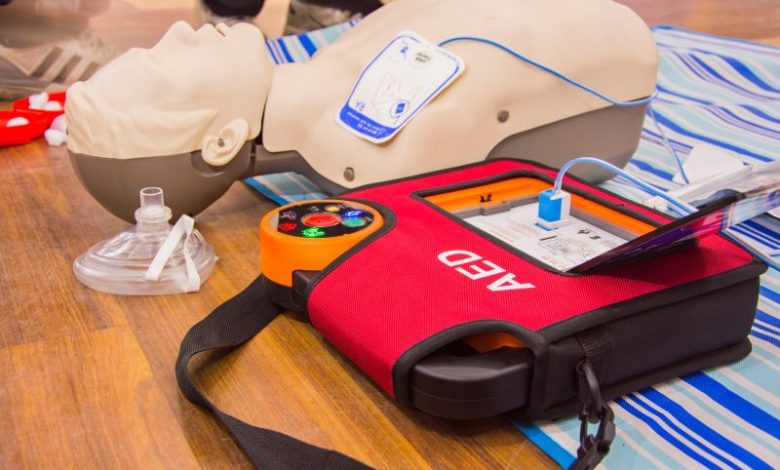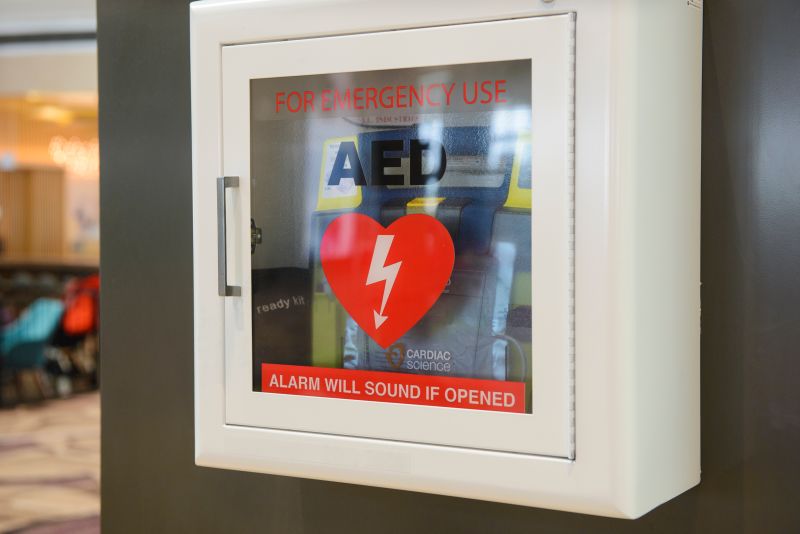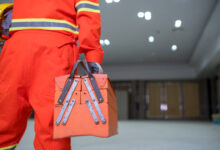Is your school prepared? The necessity of AEDs
Sudden cardiac arrests can be deadly – is your school prepared to respond in an emergency?

A sudden cardiac arrest occurs when the heart stops pumping blood around the body.
When this happens, breathing stops and the person falls unconscious. It can happen at any time, anywhere and to anyone, including children. Without immediate treatment, a sudden cardiac arrest can lead to death, and survival rates can be as low as one in 10. Every year, more than 2000 people are treated for an out-of-hospital cardiac arrest in Aotearoa. That’s around five people a day. Between 2020 and 2021, only 11 percent of patients survived a sudden cardiac arrest in New Zealand.
Read the Term 1 edition of School News HERE
In the event of a sudden cardiac arrest, knowledge of CPR and access to a defibrillator, or AED, is crucial to a person’s chances of survival. During community cardiac arrest events, survival often hinges on bystander actions. Early CPR and defibrillation dramatically improves survival rates, and for every minute without these interventions, chances of survival fall by 10 to 15 percent.
In Aotearoa, first aid is a requirement under the Health and Safety at Work Regulations 2016. This means that all boards have a requirement to provide first aid in the event of an emergency, such as a sudden cardiac arrest. Schools are also often the centre of their communities. Having an AED on site is therefore not only instrumental in fulfilling health and safety requirements, it’s also beneficial for the wider community.
The Ministry of Education recommends school boards consider the following questions when creating health and safety protocols in the event of a cardiac arrest:
- If there is an emergency do staff and students know first aid including how to do CPR and how to use an AED, if we have one onsite?
- Do we have a clear and simple plan to access the AED?
- Is the AED accessible to groups using school grounds and facilities outside of operating hours?
- Is first aid, including CPR and AED use, being taught to students? Is adequate training around first aid provided to kaimahi?
- Does my school plan ahead for EOTC activities and emergencies that could happen?
- Have we recently invited the local ambulance crew to visit our school and to engage with students?
One of the first considerations for an AED purchase is where to locate the device. It should be in a central location that is easily and rapidly accessible in an emergency, and there should be a clearly outlined and defined process for accessing the device.
Next, there’s the question of model. All AEDs work similarly, and even untrained people can operate them. Schools should also consider portability of AEDs, and whether the unit will be taken offsite for camps, sporting activities and other excursions.
When purchasing an AED, schools should note maintenance requirements, which are usually listed on the user manual. Batteries may need replacing, and some associated medical equipment of the AED may expire. Establishing a regular maintenance plan is essential.
Remember, an AED is only the first component of being cardiac-event ready. First aid training is also crucial for emergency situations. Many schools choose to include CPR in their health and physical education curriculum.

Carol Gardiner from Red Cross said schools should seek an AED that is easy to use, reliable, durable, and with advanced technology to help victims survive a sudden cardiac arrest.
“Whether an experienced first aider, or a first-time responder, having an AED that is intuitive and intelligent can assist to give confidence to the responder, by guiding the user through each critical step of the rescue,” Ms Gardiner said. “Having an AED that provides clear verbal instructions to the rescuer can help to ensure the device is used properly. Monitoring the quality of CPR feedback is an important advancement in some recent devices.
“Look for long-lasting consumables, (pads and battery life) to increase readiness in an emergency, and also reducing the frequency of maintenance. In a school environment having a device that is suitable for both adult and paediatric use may be an important factor.”
When choosing a device for your school, Ms Gardiner recommends checking what ongoing maintenance is required. “Most modern devices don’t require a regular service, and some devices may conduct self-test on pads, battery, and internal circuits on a daily basis, alerting when a service may be needed, and ensuring the device is ready when an emergency occurs.
“A first aid course will include generic training on AEDs to ensure staff feel confident not just in AEDs and CPR, but in all First Aid events. If you would like to provide a shorter training program specifically on AEDs and CPR, look for an AED provider who can also provide training to staff on how their AED works, the importance of CPR, and how to use this in an emergency.”









